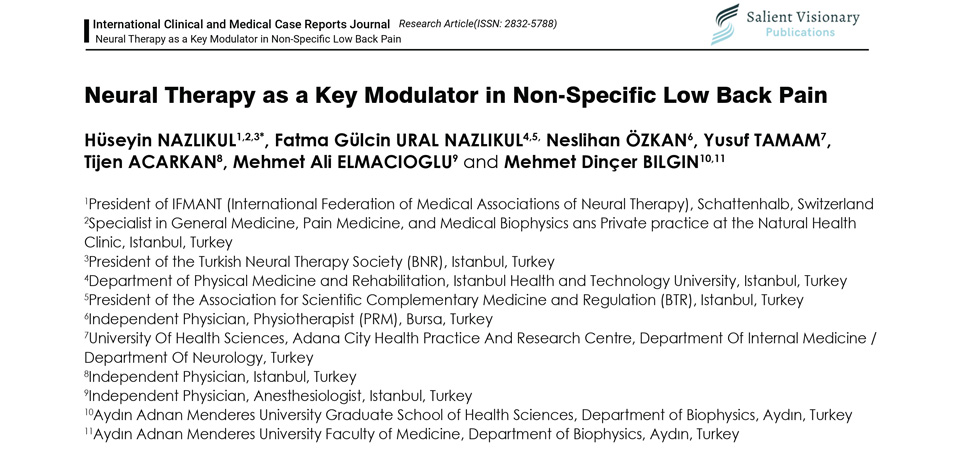Neural Therapy as a Key Modulator in Non-Specific Low Back Pain

ABSTRACT
Background: Non-specific low back pain (NSLBP) is a widespread musculoskeletal disorder with multifactorial origins, including postural dysfunctions, myofascial imbalances, autonomic dysregulation, and psychosocial influences. Differentiating between functional and degenerative causes is crucial for treatment planning. Conventional therapies often fall short, particularly in chronic cases. This study evaluate the efficacy of neural therapy as a regulatory, minimally invasive treatment option for NSLBP.
Methods: This retrospective analysis includes 1,242 patients treated at the Natural Health Clinic between 2017 and 2024. Patients underwent neural therapy targeting modulation of the autonomic nervous system (ANS), resolving interference fields, and treating myofascial trigger points. Treatment duration, symptom severity (VAS, ODI), and functional improvement were assessed, with stratification by age and chronicity.
Results: Neural therapy led to complete symptom resolution in 29% of cases and marked improvement in 35%, with only 2% reporting worsening symptoms. Most patients required between 2 and 4 sessions; fewer than 10% needed over 12 sessions. Age and symptom duration correlated with treatment intensity—older and long-term chronic patients often needed more sessions. Combined with manual medicine, neural therapy enhanced outcomes by addressing vegetative dysfunctions, neurogenic inflammation, and segmental restrictions.
Conclusion: Neural therapy offers a compelling integrative approach for both functional and degenerative NSLBP. Its ability to regulate autonomic dysfunctions, reduce chronic inflammation, and address underlying interference fields positions it as a practical component of multimodal pain management. The retrospective data from over 1,200 patients underscores its clinical relevance, especially for middle-aged and older adults with chronic symptoms.
View / Download PDF |
 English
English Türkçe
Türkçe